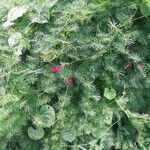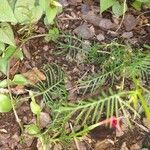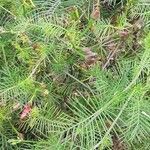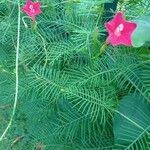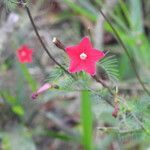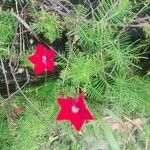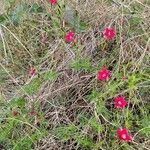Annual; stems slender, glabrous, twining, 1–5 m; lvs broadly ovate in outline, 4–8 cm, pinnately divided to the midvein into numerous narrowly linear lobes; petioles 1–3 cm; peduncles elongate, much longer than the subtending petioles, with 1–few fls at the top; sep obtuse or rounded, mucronate; cor ± salverform, scarlet, rarely varying to white, 2.5–3.5 cm; anthers and style exsert; fr 4-locellar; 2n=30. Native of trop. Amer., occasionally escaped into fields and waste places, especially in the s. part of our range. Summer and fall. (Quamoclit q.; Q. vulgaris)
Vines; stems slender, herbaceous, annual, glabrous. Leaves 1-9 cm long, ovate to elliptic in outline, deeply pinnatisect with 9-19 alternate or opposite pairs of linear lobes, glabrous. Flowers solitary or in 2-5-flowered cymes; sepals elliptic to oblong, 4-7 mm long, obtuse apically, with a 0.25-0.75-mm-long mucro, glabrous; corollas red or rarely white, 2-3 cm long. Fruits capsular, ovoid, 6-8 mm in diameter; seeds dark to black, with dark patches of short trichomes scat-tered somewhat irregularly.
A twining herb. It can be a climber. It can be 4-5 m long. It has tuberous roots. The leaves are divided along the stalk. The lobes are very narrow. They are feathery. The flowers are trumpet shaped. The lobes are pointed. They are red but occasionally white.
A glabrous twiner, cultivated like the last (Ipomoea muricata).
